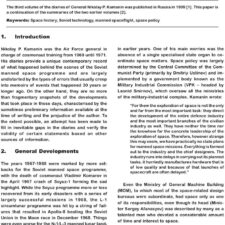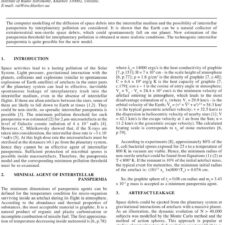Technological Challenges in Low-Mass Interstellar Probe Communication
£5.00
D. G. Messerschmitt et al. (2020), JBIS, 73, pp.438-445
Refcode: 2020.73.438
Keywords: Interstellar probes, Proxima Centauri, Communications
Abstract:
Building on a preliminary paper design of a downlink from a swarm of low-mass interstellar probes for returning scientific data from the vicinity of Proxima Centauri, the most critical technology issues are summarized, and their significance is explained in the context of the overall system design. The primary goal is to identify major challenges or showstoppers if such a downlink were to be constructed using currently available off-the-shelf technology, and thereby provide direction and motivation to future research on the constituent design challenges and technologies. While there are not any fundamental physical limits that prevent such communication systems, currently available technologies fall significantly short in several areas and there are other major design challenges with uncertain solutions. The greatest identified challenges are in mass constraints, multiplexing simultaneous communication from multiple probes to the same target exoplanet, attitude control and pointing accuracy, and Doppler shifts due to uncertainty in probe velocity. The greatest technology challenges are electrical power, high power and wavelength-agile optical sources, very selective and wavelength-agile banks of optical bandpass filters, and single-photon detectors with extremely low dark-count rates. For a critical subset of these, we describe the nature of the difficulties we encounter and their origins in the overall system context. A receiver that limits reception to a single probe is also considered and compared to the swarm case.





